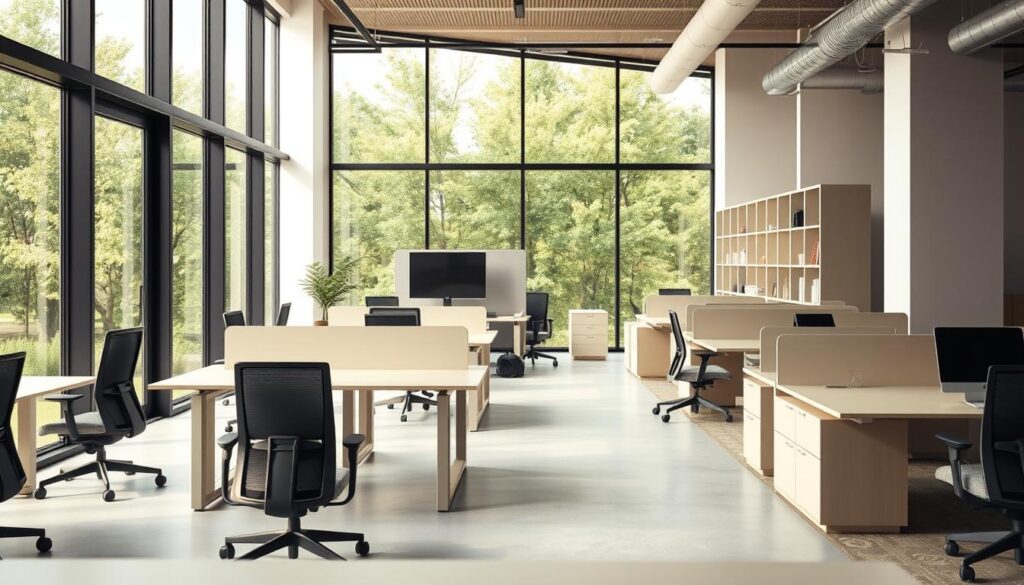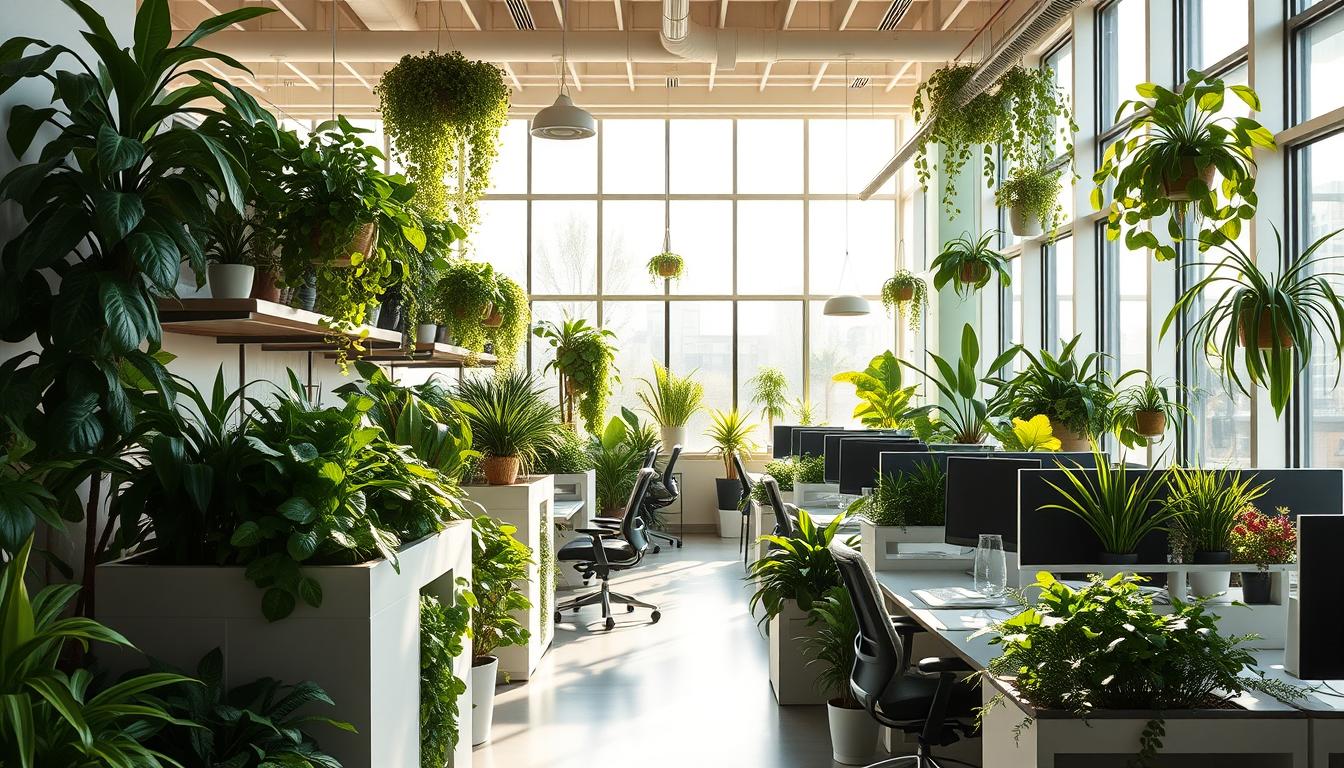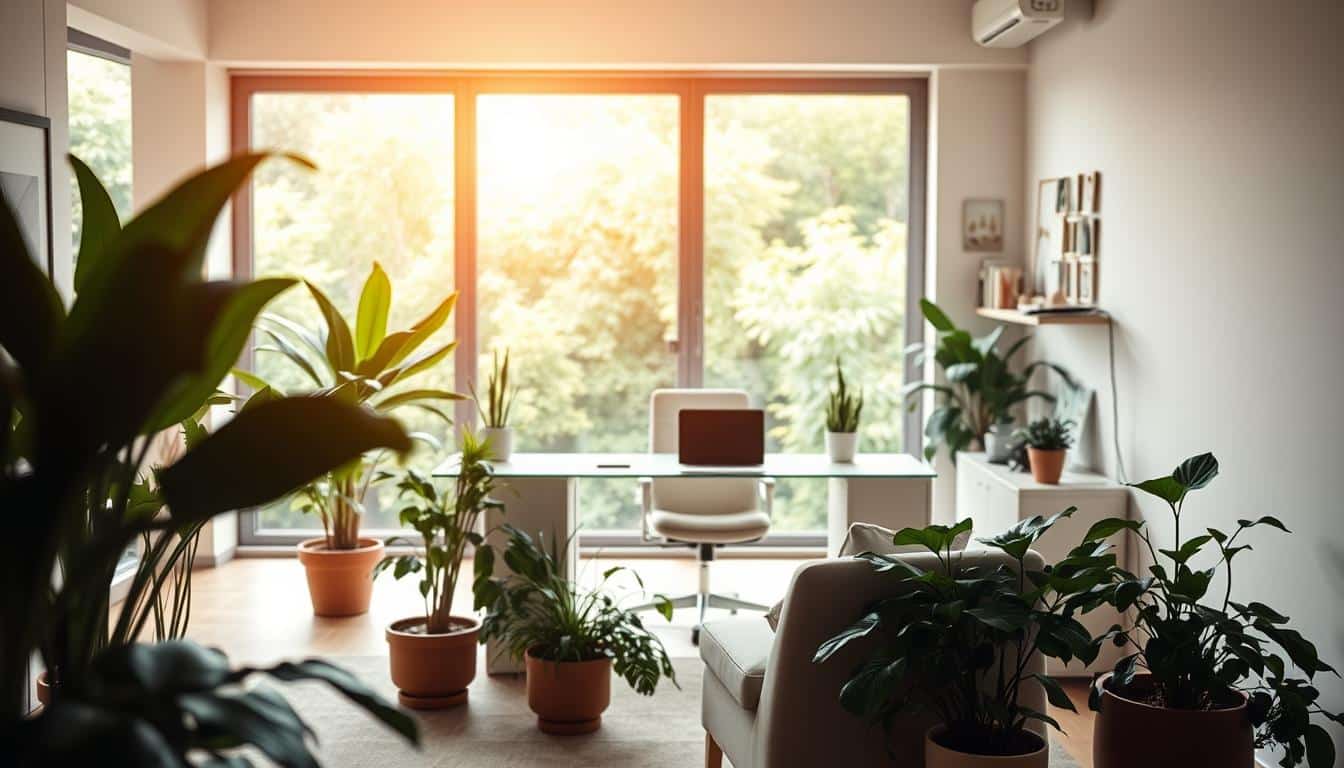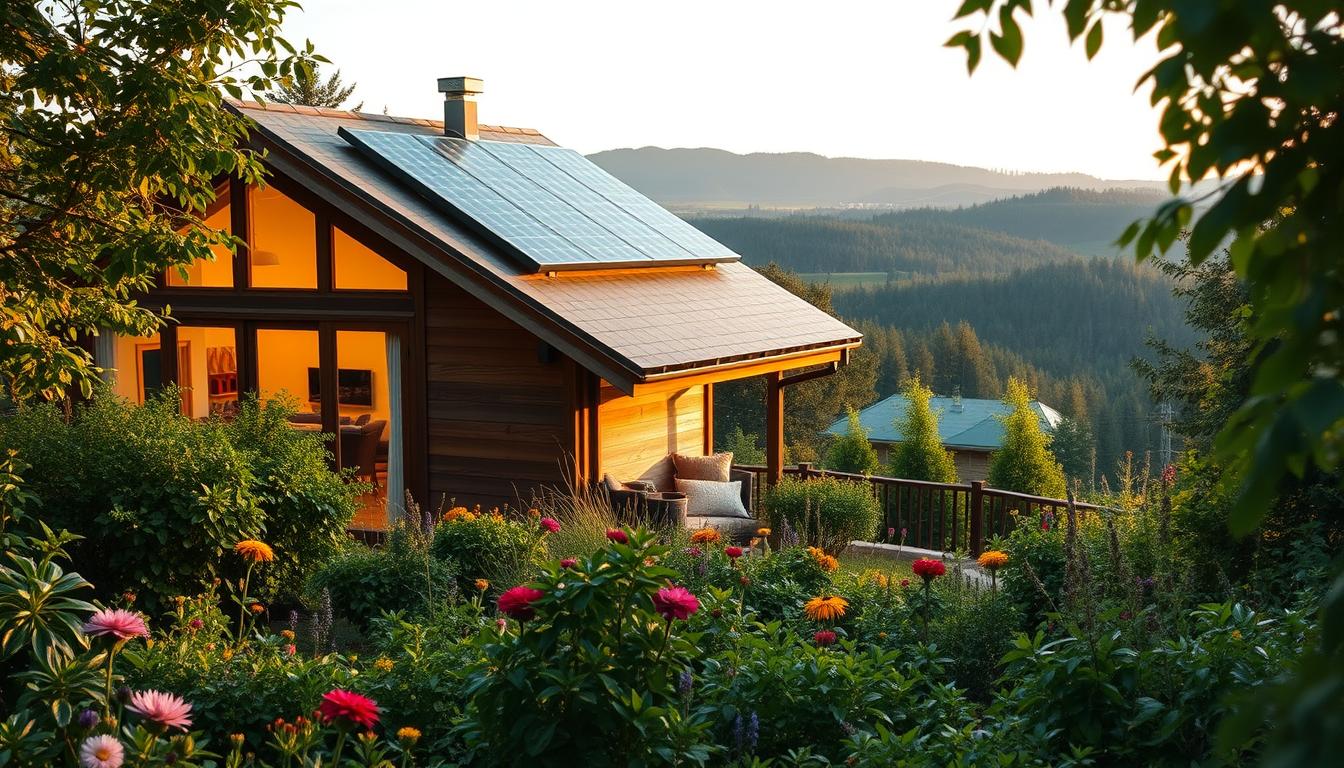The way we work is changing, and flexible workspaces are now more popular. Adding dynamic greenery has become a standout trend. It makes offices look better and supports employee health. Companies are moving to hybrid work and find bringing nature indoors important.
This makes the office fit various needs while boosting work output and health. We will look into how dynamic greenery benefits flexible workspaces. It’s a key part of today’s office design.
Understanding Flexible Workspaces
Flexible workspaces change to fit different work styles and needs. They offer modern solutions that avoid big changes. These spaces are ideal for hybrid teams working from various places.
Definition of Flexible Workspaces
Flexible workspaces are designed for adaptability. They include coworking spaces and hot desking. This setup lets companies use space better and keeps workers happy. Now, not just startups, but big companies too, are using them.
Types of Flexible Workspaces
It’s important for companies to know about different workspace options. Some common types are:
- Coworking Spaces: Shared environments for people from different companies.
- Hot Desking: A no-assigned-desk system, letting employees choose where to work.
- Flexible Offices: Traditional spaces, reconfigurable for different team needs.
- Collaborative Areas: Special zones for team work and sharing ideas.

The Importance of Flexibility in Modern Workplaces
Today’s businesses need to be flexible to succeed. They must adapt to their team’s needs and preferences. This is key with hybrid work models, requiring creative ways to stay agile.
Adaptability to Changing Business Needs
Flexible workspaces help an organization react quickly to changes. Whether it’s growing the team, adding new tech, or layoffs, an adaptable workspace is essential. It keeps things running smoothly and cuts down costs of traditional office spaces. This lets businesses grow fast and use their workspace as a strategic tool.
Meeting Diverse Employee Preferences
It’s important to know what employees want to keep them happy at work. Flexible workspaces support different styles of working—like team projects, solo work, or relaxing. This approach boosts employee happiness, which can lead to them staying longer and working harder. Hybrid work models let employees decide when and where they work, making the company more agile.
Dynamic Greenery for Flexible Workspaces
Adding plants to flexible workspaces makes them look better and helps keep the office healthy and productive. Knowing how indoor plants boost employee happiness and well-being can encourage organizations to get them.
Benefits of Incorporating Plants
Plants in the workplace bring many positive changes. They improve air quality by filtering out pollutants. This leads to a more focused, creative, and happy workplace.
Studies have found that plants lower stress. This makes people feel more relaxed and happy at work. Happy people work better, especially in places designed with nature in mind.
Types of Suitable Indoor Plants
Choosing the right indoor plants is key. Here are some that do well in offices:
- Spider Plant
- Snake Plant
- Pothos
- Peace Lily
- Rubber Plant
These plants are not only nice to look at but also easy to care for. They help keep the office healthy.
Innovative Biophilic Design Concepts
Using biophilic design in workspaces connects employees with nature. This approach includes adding elements like green walls, clusters of plants, and letting in natural light. Such designs make the workplace better, making employees happier and more productive.
Enhancing Employee Well-being with Greenery
Adding plants to the workplace helps employee wellness. Companies are making efforts to improve work environments. Including indoor plants boosts mood and work output. This brings workers closer to nature, making the office feel more welcoming and promoting health.
Psychological Benefits of Indoor Plants
Indoor plants make people feel better mentally. They help reduce stress and make moods better, which is key for employee well-being. Studies show that green spaces at work lead to happier employees and less stress. Plants create a peaceful vibe, sparking creativity and teamwork.
Impact on Health and Productivity
Greenery has a big effect on workplace health. When employees are healthy, they get more done. Adding plants to work areas boosts focus and concentration. This means employees are less stressed and work better with their environment. So, they produce higher quality work, helping the company do well.
Designing Your Workspace with Dynamic Greenery
Having a lively office setting boosts productivity and happiness. Adding greenery makes the office look and feel natural. It’s key to blend plants smoothly into your workspace layout.
Creating Biophilic Spaces
Putting plants in the right spots is key to making biophilic spaces work. You should:
- Use natural light to help plants grow and make the office feel warm.
- Place plants at different levels to add variety to the space.
- Pick plants that clean the air and look great.
This approach builds a bond with nature, helping employees feel better and work harder.
Integrating Greenery in Different Workspace Types
Different workspaces mean different greenery plans. Keep these in mind:
- Open Offices: Vertical gardens or hanging plants can divide space without closing it off.
- Meeting Rooms: A big, eye-catching plant can boost focus and teamwork.
- Break Areas: Full plants make relaxing spots better for taking a break and chatting.
Every type of workspace can make its area nicer and more effective with the right plants.
Challenges of Implementing Greenery in Offices
Bringing plants into office spaces can be tricky. Businesses face obstacles that affect how well plants do in these settings. These include not having enough space and figuring out how to care for the plants.
Space Limitations
Finding room for plants can be tough in office environments. Companies need to think about how to add greenery without making spaces feel crowded. In smaller offices, this problem is even bigger. Keeping things moving freely is very important. Here’s what companies can try:
- Selecting plants that require minimal space and are adaptable to various office layouts.
- Using vertical gardens or wall-mounted planters to efficiently utilize available space.
- Incorporating smaller pots and arrangements that allow for fluid movement within the workplace.
Maintenance Considerations
Worrying about taking care of plants can stop offices from getting greenery. If taking care of plants seems like too much work, employees might not want them around. But there are ways to make it easier:
- Choose low-maintenance plants that thrive with minimal attention, reducing the workload on staff.
- Establish a regular maintenance schedule, either through in-house teams or professional services.
- Educate employees on basic plant care to foster a sense of responsibility and engagement with greenery.
Emerging Trends in Workspace Design
Companies are changing how they design workspaces due to new trends. These trends make the office better for employees, help the planet, and use new tech. AI is now a big deal in making workspaces that fit what each person needs.
The Role of AI in Workspace Customization
Artificial intelligence (AI) is changing the game in office design. It looks at how employees use spaces and suggests improvements. This way, offices can support everyone’s work style and how they team up.
Sustainable Practices in Office Design
Eco-friendly office designs are good for the Earth and the office vibe. Companies are using recycled stuff, saving energy, and bringing in plants. Doing this draws in workers who care about the planet and cuts down on waste.
Case Studies of Successful Implementations
Looking into real-life cases teaches us a lot about using plants in office areas. Many companies have managed to add nature to their workspaces successfully. This has made their employees happier and more productive. These examples of dynamic greenery teach other companies valuable lessons in designing workspaces.
Examples of Companies Utilizing Dynamic Greenery
Big tech companies like Google and Facebook show how well dynamic greenery works. They’ve brought a lot of plants and green walls into their offices. This makes their spaces more welcoming and helps people think and work together better.
Google’s places have outdoor gardens and comfy seating near various plants. This setup encourages team members to interact more. Facebook’s main location has indoor parks where people can hang out. This shows they really care about making work enjoyable.
Lessons Learned from Successful Projects
The stories of these big companies teach us a lot about office design. Here are some important lessons:
- Putting employee wellness first by using natural designs can boost their work output.
- Adding plant life can lower the chance of people leaving their jobs. Employees like places that are nice to look at and good for their health.
- Designs that mix in nature make teamwork easier and make everyone feel better at work.
Conclusion
Flexible workspaces are changing, and adding plants is key to making places where people feel good. Plants make offices look better and help with mental health. They help people feel more creative and happy at work.
More companies understand the need to include plants in their office designs. This is because plants do more than look nice. They improve the air and help everyone work better. This shows how important it is to be flexible at work today.
In the future, offices will focus more on connecting with nature. This will make healthier places that can change as needed. By adding more plants, companies create better environments. This helps employees stay engaged and feel well.



